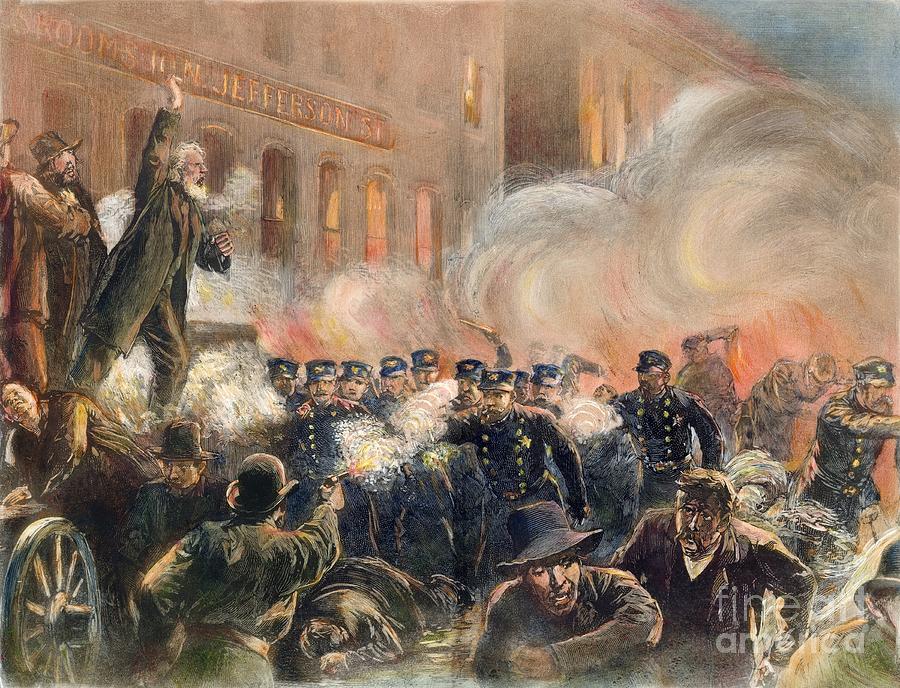But what is "Labor Day" really? Well, it was intended to be a day to honor the working men and women, particularly those belonging to a union, who built this nation and kept it running. Labor Day was signed into law by President Grover Cleveland on June 28, 1894 establishing the first Monday of September as a national holiday, and yet despite its 129 year history, so few of us know the full story of Labor Day or its socialist beginnings.
Yes, you read that right. Labor Day was established essentially as a socialist holiday. The origins of Labor Day began starting in the 1880's with the rise of trade unions and the labor movement, primarily in response to dangerous working conditions, poor wages, long hours, a lack of healthcare, and miserable housing. Working women had it just as bad as the men, which was pretty bad. Even children as young as six or seven were often pressed to working in conditions well beyond their years.
Some employers, like Ford, even required workers to follow a certain moral code or social guidelines like no drinking, smoking or mandatory church attendance (of the employer's choice) just to remain employed! Company inspectors made routine visits to ensure compliance while others were required to live in so-called "company towns" and were paid in "script", thus attaching them to their employer.
Work related injuries, respiratory diseases like black lung, and premature deaths were common, and yet there was no legal recourse with the employer or state. The misery and coarseness of everyday life can't be stressed hard enough because in today's world such misery can hardly be imagined. These were just some of the conditions which led to workers slowly organizing into unions and associations whose governance was based on the majority vote and "an injury to one is an injury to all" mentality.
The origins of Labor Day can ultimately be traced to two individuals, Peter J. McGuire and Matthew Maguire. Peter was born in New York City in 1852, the son of a poor Irish Catholic immigrants. He was the co-founder, along with German immigrant Gustav Luebkert, of the United Brotherhood of Carpenters and Joiners of America in 1881.
McGuire later joined with Austrian born Adolph Strasser, the president of the Cigar Makers Union, to found the Socialist Democrat Workingman's Party of North America (Strasser, along with Samuel Gompers, would later found the American Federation of Labor or AFL). The unions sought to merge social democracy with improving living conditions of the masses.
McGuire, by now a vice president of the AFL, is generally credited with being the first to propose the creation of a national day recognizing the labor movement in America after an earlier visit to Toronto Canada to see the May Day celebrations ("May Day", celebrated on May 1st, is also known as the International Day of the Worker) at a convention of the Knights of Labor in 1882.
The other individual given credited with helping to establish Labor Day is Matthew Maguire. Matthew was the general secretary of the Central Labor Union of New York, Brooklyn and New Jersey (or known simply as the CLU), which later merged with what became the AFL-CIO. The union, which was strongly Marxist, was originally founded in 1867 in New York and ultimately spread to Philadelphia.
The union was closely tied to the United Labor Party, a combination of a number of unions and organizations such as the Socialist Labor Party, the Knights of Labor, the Central Labor Union and another 113 similar unions and labor associations.
The party, which was formed following the Haymarket Riot of 1886, promoted free trade, the secret ballot, a single tax on all private property, ending child and convict labor, and promoting low fares on public transportations and discounts on public utilities for low income families.
It is alleged by some that Matthew Maguire had first suggested setting aside a day to honor working men and women to CLU leadership, and after some discussion, the suggestion was approved. Others, however, suggest that Matthew was merely given credit for the suggestion since he was the general secretary. Nevertheless, the CLU is believed to be the first union to begin promoting parades, festivities and so forth to honor working men and women of the labor movement.
The popularity of the labor holiday quickly spread from city to city and state to state, becoming either an official holiday or a de facto one with parades, picnics, speeches, and so forth. By 1894, 30 of the 44 U.S. states had made it an official holiday. In that same year, Congress (obviously recognizing a winning issue with labor) proposed a bill making it a federal holiday. It was signed by President Grover Cleveland in June, and was to go into effect that September. It should be pointed out that the new law pertain only to federal employees and it took until the 1930's before the holiday was legally celebrated everywhere.
Ironically, the first Labor Day came immediately following the infamous "Pullman Strike" which was two closely related strikes involving members of the American Railway Union led by Eugene V. Debs, the Pullman Palace Car Company, the producer of railroad cars, and unorganized workers living in the company town of Pullman.
If you enjoyed the article, please
consider passing it along to others and don't forget to subscribe. It's
free! Lastly please be sure to "like" us on whatever
platform you use to read anotheropinionblog.com. It helps with the algorithms and keeps
our articles in circulation. Thank you!
Video: The History of Labor Day (2:18 minutes)
Video: Labor Day's Violent Beginnings (2:34 minutes)
Video: The Haymarket Tragedy (5:51 minutes)
Video: The Pullman Strike (5:31 minutes)




No comments:
Post a Comment